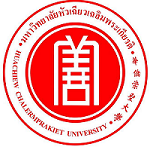Please use this identifier to cite or link to this item:
https://has.hcu.ac.th/jspui/handle/123456789/3548Full metadata record
| DC Field | Value | Language |
|---|---|---|
| dc.contributor.author | พัชรินทร์ บูรณะกร | - |
| dc.contributor.author | Patcharin Buranakorn | - |
| dc.contributor.other | Huachiew Chalermprakiet University. Faculty of Liberal Arts | en |
| dc.date.accessioned | 2025-01-20T04:53:01Z | - |
| dc.date.available | 2025-01-20T04:53:01Z | - |
| dc.date.issued | 2014 | - |
| dc.identifier.citation | วารสารไทยศึกษา 10, 1 (กุมภาพันธ์-กรกฎาคม 2557) : 1-25 | en |
| dc.identifier.uri | https://has.hcu.ac.th/jspui/handle/123456789/3548 | - |
| dc.description | สามารถเข้าถึงบทความฉบับเต็ม (Full Text) ได้ที่ : http://www.thaistudies.chula.ac.th/ThaiStudies_Mag/%E0%B8%A7%E0%B8%B2%E0%B8%A3%E0%B8%AA%E0%B8%B2%E0%B8%A3%E0%B9%84%E0%B8%97%E0%B8%A2%E0%B8%A8%E0%B8%B6%E0%B8%81%E0%B8%A9%E0%B8%B2%2010_1.pdf | en |
| dc.description.abstract | บทละครนอก เรื่องสังข์ทอง และ คาวี ได้นำเสนอแนวคิดพุทธศาสนา เรื่องทุกข์ เหตุแห่งทุกข์และทางพ้นทุกข์ โดยนำเสนอเรื่องทุกข์ ทั้งทุกข์กาย ทุกข์ใจ และทุกข์กายที่เกิดพร้อมกับทุกข์ใจ ซึ่งมีเหตุแห่งทุกข์มาจากการที่ต้องพลัดพราก จากกัน จากการกระทำของมนุษย์ ซึ่งวิเคราะห์ตามหลักปฏิจสมุปบาทพบว่ามนุษย์ ที่ก่อทุกข์แก่ผู้อื่นนั้น เกิดจากอวิชชา ตัณหา และอุปาทาน เป็นตัวนำให้เกิดเวทนา สังขาร และภพ คือการคิดและกระทำการอันไม่ดีต่อผู้อื่น ตัวละครที่ก่อทุกข์แก่ผู้อื่น นั้นเวียนว่ายอยู่ในวงจรแห่งทุกข์ทั้งก่อทุกข์แก่ตนเองและขยายขอบเขตของทุกข์ไปยัง ผู้อื่นด้วย หนทางพ้นทุกข์ที่บทละครนอกนำเสนอคือ การพ้นทุกข์ด้วยความมานะ พยายาม ด้วยความซื่อสัตย์ ด้วยการให้อภัย บทละครนอกทั้ง ๒ เรื่อง คือ สังข์ทอง และ คาวี อันมีผู้สันนิษฐานว่า มีที่มาจากปัญญาสชาดกนี้ ได้นำเสนอแนวคิดทางพุทธศาสนาไว้อย่างเด่นชัด และนำเสนอด้วยกลวิธีของงานเขียนบันเทิงคดีที่ทำให้ผู้อ่านรู้สึกเพลิดเพลินไปกับเรื่องราว แต่ขณะเดียวกันก็ได้รับสาระความรู้อันเป็นประโยชน์แก่การดำเนินชีวิตไปด้วย จึง อาจกล่าวได้ว่าบทละครนอกจึงเป็นวรรณคดีที่สืบทอดวัฒนธรรมชาดกจากปัญญาสชาดกทั้งกลวิธีนำเสนอแนวคิดทางพุทธศาสนาและแนวคิดทางพุทธศาสนาในระดับ เบื้องต้นได้อย่างชัดเจน | en |
| dc.description.abstract | The study reveals that “Sangthong” and “Kawi” present the Buddhist dharma of suffering, cause of suffering and the way leading to the end of suffering. They show all types of suffering such as physical suffering, mental suffering and both physical and mental suffering at the same time. The causes of the suffering are the separation from the beloved and human act. According to the doctrine of pratītyasamutpāda, man make other suffered from Avidyā, Vedanā and Upādāna which cause Vedanā, Sangskāras and Bhava. These are bad thought and act toward other. The characters that make other suffered stay in the cycle of sufferings of themselves and extend the suffering to others. In the Lakhon Nok’s play, the way to the end of suffering is to do with effort, faithfulness and forgiveness. In summary, both “Sangthong” and “Kawi”, which were assumed the origin of Paāsa Jātaka, present obviously the Buddhist dharma and present with the technique of fiction for the purpose of reader’s entertainment. At the same time, readers also gain the beneficial information for life. Therefore Lakhon Nok is the literature inherits of the Paāsa Jātaka culture including technique to present Buddhist dharma and primary notion of Buddhism evidently. | en |
| dc.language.iso | th | en |
| dc.subject | ละครนอก | en |
| dc.subject | Lakhō̜n nō̜k | en |
| dc.subject | ปัญญาสชาดก | en |
| dc.subject | Pannasa Jataka | en |
| dc.subject | ชาดก | en |
| dc.subject | Jataka stories | en |
| dc.subject | การวิเคราะห์เนื้อหา | en |
| dc.subject | Content analysis (Communication) | en |
| dc.subject | สังข์ทอง -- ประวัติและวิจารณ์ | en |
| dc.subject | Sangthong (Thai literature) – History and Criticism | en |
| dc.subject | คาวี – ประวัติและวิจารณ์ | en |
| dc.subject | Kawi (Thai literature) – History and Criticism | en |
| dc.subject | ความทุกข์ -- แง่ศาสนา – พุทธศาสนา | en |
| dc.subject | Suffering -- Religious aspects – Buddhism | en |
| dc.title | ทุกข์ เหตุแห่งทุกข์ และหนทางพ้นทุกข์ตามแนวคิดพุทธศาสนาระดับโลกิยะ ในบทละครนอก เรื่อง สังข์ทอง และคาวี | en |
| dc.title.alternative | Suffering in Buddhism on “Lakhon Nok” story ““Sangthong” and “Kawi” | en |
| dc.type | Article | en |
| Appears in Collections: | Liberal Arts - Articles Journals | |
Files in This Item:
| File | Description | Size | Format | |
|---|---|---|---|---|
| Suffering-in-Buddhism.pdf | 86.69 kB | Adobe PDF | View/Open |
Items in DSpace are protected by copyright, with all rights reserved, unless otherwise indicated.
